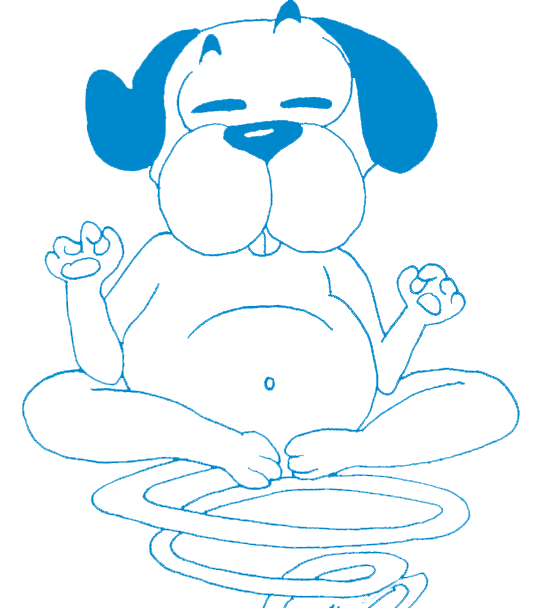Whether we are talking about physical or mental activities, they have the advantage of keeping our companions busy and entertained, to avoid long, boring days. The general activity of a dog in a day is composed of:[1]
- locomotor activities,
- vocal activities,
- masticatory activities,
- intellectual activities,
- sexual activities.
Each of these categories contains countless examples. Our dog spends time drinking and eating, doing his business, going out in the garden and exploring, chewing his toys (or the couch), playing with the other animals in the family, cleaning himself, being petted,… Their average daily activity is ± 8 hours a day (need to sleep on average ± 16 hours, up to 20 hours for a puppy).
The motto “a healthy mind in a healthy body” invites us to practice both types of activities. This is also true for our dogs. According to Professor Bernard Sablonnière [2] “Regular exercise stimulates neurogenesis [3] by activating the release of neurotrophins [4], and cognitive stimulation activates the survival of young neurons formed in the hippocampus by promoting their connectivity in existing neural networks“. Physical exercise helps to create new neurons, and mental stimulation helps in the development of these new neurons and their connection to the existing network. It is team work.
Let’s admit that when we think about our dogs’ activities, most of us automatically think of physical activities, such as running, swimming, jumping,… All these activities seem natural to us. Depending on the breed, certain predispositions can be noticed: a shepherd will actively gather the individuals around him (people, dogs,…), a greyhound will sprint, a ratter will hunt small animals that happen to be in his field of vision,…
During physical activities, one or the other of our dog’s 5 senses are activated (smell, sight, hearing, touch, taste), which naturally makes his brain and neurons work (= mental stimulation). However, dynamic physical activities leave little time for the brain to analyse and process the sensory information provided.
[1] Source: Joël Dehasse, veterinary and behaviorist
[2] Source: Pr Bernard Sablonnière, French doctor and biologist : « Le cerveau, les clés de son développement et de sa longévité »
[3] Neurogenesis: creation of a neuron
[4] Neurotrophins: molecules essential for the survival of neurons

